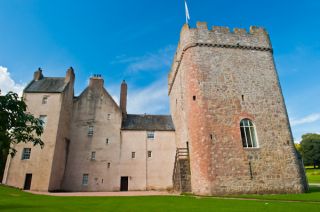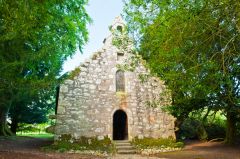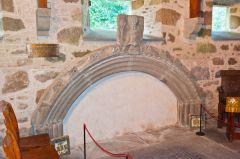
When Robert the Bruce defeated his great rivals for the throne, the Comyns, he gave Drum to his close friend and armour-bearer, William de Irwyn. Drum then passed in an unbroken line through 24 generations of Irvines.
It fell to an army of Covenanters during the religious struggles of the 17th century and was ransacked twice by the Marquis of Montrose. The Irvines supported the Stuarts in the Jacobite Risings of 1715 and 1745. Following the Battle of Culloden in 1745 the 17th laird hid from government troops in a secret chamber within the castle. His family, fearing the worst, buried the family silver. Unfortunately, the government soldiers spotted the freshly dug earth and siezed the money. The Irvines kept the castle and estate, but their days of glory on the national stage were over.
One of the special features at Drum Castle is the garden of historical roses. This delightful walled garden is divided into four different sections, each planted in the style of a different century, with authentic rose varieties where possible. And I can say from experience that the scent from the different flowers is divine!
The oldest part of the castle is the High Hall, one of earliest tower houses in Scotland, dating to the late 13th or early 14th century. Part of the tower was later absorbed into the Jacobean expansion to the house. You can climb to the roof of the tower for wonderful views over the castle grounds.
The interiors are simply furnished, with exhibitions telling the story of the people who lived here over the centuries, particularly the last owners of the house.









 We've 'tagged' this attraction information to help you find related historic attractions and learn more about major time periods mentioned.
We've 'tagged' this attraction information to help you find related historic attractions and learn more about major time periods mentioned.




